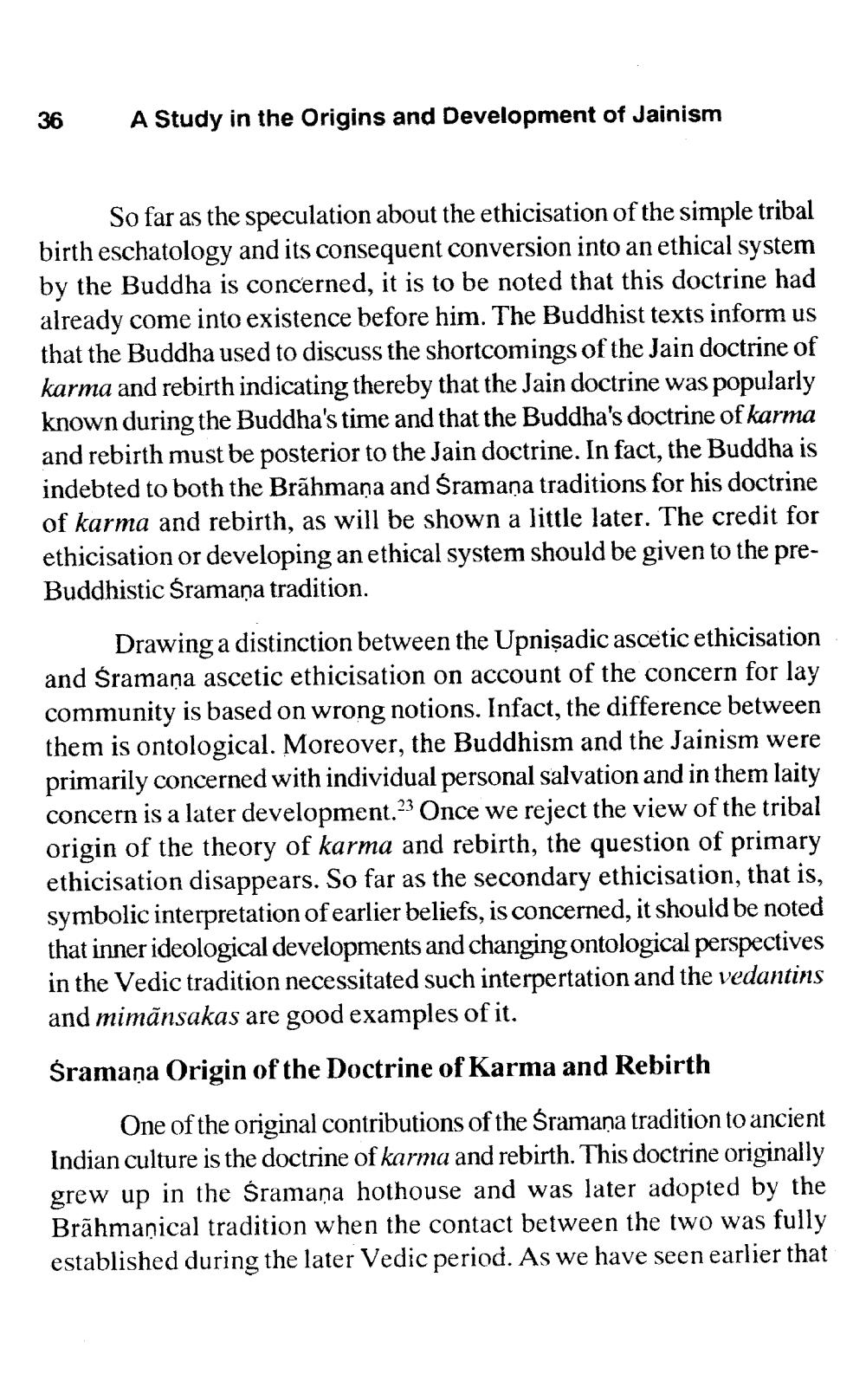________________
36
A Study in the Origins and Development of Jainism
So far as the speculation about the ethicisation of the simple tribal birth eschatology and its consequent conversion into an ethical system by the Buddha is concerned, it is to be noted that this doctrine had already come into existence before him. The Buddhist texts inform us that the Buddha used to discuss the shortcomings of the Jain doctrine of karma and rebirth indicating thereby that the Jain doctrine was popularly known during the Buddha's time and that the Buddha's doctrine of karma and rebirth must be posterior to the Jain doctrine. In fact, the Buddha is indebted to both the Brāhmana and śramana traditions for his doctrine of karma and rebirth, as will be shown a little later. The credit for ethicisation or developing an ethical system should be given to the preBuddhistic Śramana tradition.
Drawing a distinction between the Upnişadic ascetic ethicisation and Áramaņa ascetic ethicisation on account of the concern for lay community is based on wrong notions. Infact, the difference between them is ontological. Moreover, the Buddhism and the Jainism were primarily concerned with individual personal salvation and in them laity concern is a later development.Once we reject the view of the tribal origin of the theory of karma and rebirth, the question of primary ethicisation disappears. So far as the secondary ethicisation, that is, symbolic interpretation of earlier beliefs, is concerned, it should be noted that inner ideological developments and changing ontological perspectives in the Vedic tradition necessitated such interpertation and the vedantins and mimãnsakas are good examples of it. Śramaņa Origin of the Doctrine of Karma and Rebirth
One of the original contributions of the Śramana tradition to ancient Indian culture is the doctrine of karma and rebirth. This doctrine originally grew up in the śramaņa hothouse and was later adopted by the Brāhmaṇical tradition when the contact between the two was fully established during the later Vedic period. As we have seen earlier that




